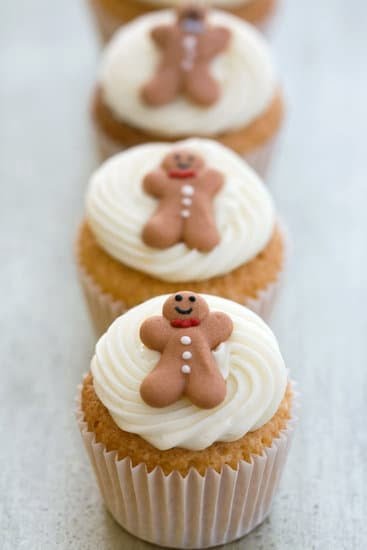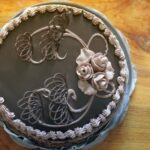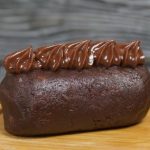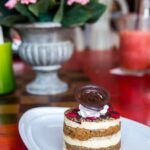Are you looking to add a personal, creative touch to your cakes? This article will guide you on how to make decorative frosting for cakes, taking them from simple desserts to stunning works of art. From the rich history of decorative frosting to exploring different types of frosting and essential tools and ingredients, this introduction sets the stage for a comprehensive journey into the world of cake decorating.
Decorative frosting has been a staple in the world of baking for centuries, dating back to ancient civilizations where intricate designs were used to adorn special occasion cakes. Today, it continues to play a crucial role in elevating the presentation and taste of cakes, making them visually appealing and delicious. Whether it’s a birthday cake or a wedding cake, beautifully frosted creations leave a lasting impression on those who indulge in them.
Before diving into the step-by-step guides and advanced techniques for creating stunning cake decorations, it’s important to explore the various types of frosting commonly used for cake decoration. From classic buttercream frosting to royal icing and fondant, each offers unique textures and applications that cater to different preferences and artistic expressions. Understanding these options is essential for mastering the art of decoration with frosting.
Types of Frosting for Cake Decoration
When it comes to decorating cakes, the type of frosting you use can make all the difference. There are several different options to choose from, each with its own unique texture and application method.
Buttercream frosting is a classic choice that is made from butter, powdered sugar, and flavorings. It’s creamy and versatile, making it perfect for creating smooth finishes or intricate designs with piped decorations. Royal icing, on the other hand, is a thinner and glossy icing made from egg whites and powdered sugar. It dries hard, making it ideal for creating delicate designs such as lacework or intricate patterns on cookies.
Another popular option for cake decoration is fondant, which is a pliable sugar paste that can be rolled out and draped over a cake for a flawless finish. Fondant can also be used to create 3D decorations like flowers or figurines due to its moldable nature. Each type of frosting has its own unique qualities and applications, so choosing the right one will depend on the desired outcome of your cake design.
In summary, understanding the characteristics of different frostings will provide you with the knowledge needed to choose the right one for your cake project. Experimenting with various types will also help you find which one works best according to your creative preferences.
| Frosting Type | Description |
|---|---|
| Buttercream | Creamy and versatile; perfect for smooth finishes or intricate designs |
| Royal Icing | Thin and glossy; dries hard; ideal for delicate designs such as lacework or intricate patterns |
| Fondant | Pliable sugar paste that can be rolled out; used for covering cakes and creating 3D decorations |
Essential Tools and Ingredients
Decorative frosting for cakes has been a beloved tradition for centuries. Dating back to ancient times, various cultures have used different techniques to decorate their baked goods with elaborate designs and patterns. Today, the art of decorative frosting is still widely practiced and can take a simple cake from ordinary to extraordinary.
When it comes to creating beautiful frosted cakes, the type of frosting used is crucial in achieving the desired look and taste. The three most common types of frosting used for cake decoration are buttercream frosting, royal icing, and fondant. Each of these frostings has its own unique properties and is suited for different decorating techniques.
To create stunningly decorated cakes, there are certain tools and ingredients that are essential for working with different types of frostings. These include piping bags and tips, food coloring, and spatulas – both regular and offset. Having these tools on hand will make the process of decorating a cake much easier and more enjoyable.
- Piping bags and tips
- Food coloring
- Spatula and offset spatula
These tools will allow you to create intricate designs with precision and add color to your frostings as desired. Whether you’re just starting out or consider yourself a seasoned baker, having quality tools at your disposal is key to successful cake decoration.
In the upcoming sections, we’ll provide step-by-step guides on how to make buttercream frosting, royal icing, and work with fondant. We’ll also delve into advanced frosting techniques such as piping flowers and using stencils for unique decorations. By following these guides, you’ll be well on your way to creating professional-looking decorative frosting for your cakes at home.
Step-by-Step Guide
Buttercream frosting is one of the most popular and versatile frostings used for cake decoration. It’s smooth, creamy, and can be easily flavored and colored to suit any cake design. Making buttercream frosting at home is quite simple and requires just a few basic ingredients. Below is a step-by-step guide on how to make buttercream frosting for your cakes.
To make a basic buttercream frosting, you will need unsalted butter, powdered sugar, vanilla extract, and heavy cream. Start by creaming the softened butter in a mixing bowl using an electric mixer until it becomes light and fluffy. Gradually add the powdered sugar to the butter, mixing well after each addition. This will create the base of your buttercream.
Next, add the vanilla extract for flavor and mix it into the frosting. Then, slowly drizzle in the heavy cream while continuing to beat the mixture. The heavy cream helps in achieving the desired consistency of the frosting. Once all ingredients are fully combined and the frosting is smooth and spreadable, it is ready to use for decorating your cake.
It’s important to note that achieving the perfect consistency for buttercream frosting is crucial for successful cake decoration. If it’s too stiff, it will be difficult to spread or pipe onto the cake, while if it’s too runny, it won’t hold its shape when decorating. Adjusting the amount of powdered sugar or heavy cream used can help achieve the ideal texture for your specific cake decorating needs.
| Ingredients | Measurements |
|---|---|
| Unsalted Butter | 1 cup (2 sticks) |
| Powdered Sugar | 4 cups |
Step-by-Step Guide
Royal icing is a versatile and essential frosting for creating beautifully decorated cakes and cookies. It has been used for centuries in the art of cake decorating and is known for its smooth texture and ability to harden when dry, making it perfect for intricate designs and details. Learning how to make royal icing is a valuable skill for anyone interested in creating visually stunning desserts.
To make royal icing, you will need just a few simple ingredients: egg whites or meringue powder, confectioners’ sugar, and water. The traditional recipe calls for raw egg whites, but many decorators prefer to use meringue powder as a safer alternative. The meringue powder is simply mixed with water to create a thick paste before adding the confectioners’ sugar.
One of the key factors in making royal icing is achieving the right consistency for your specific decorating needs. For flooding or covering large areas of a cookie or cake with royal icing, you will want a thinner consistency that can easily spread and settle into an even layer.
On the other hand, if you are piping intricate details or lines, a thicker consistency is necessary to hold its shape without spreading too much. Adjusting the amount of water added to your royal icing mixture is crucial in achieving these different consistencies.
Once you have mastered making royal icing and adjusting its consistency, you can explore various decorating techniques such as piping intricate designs, creating delicate lace patterns, and adding dimension to your cakes and cookies with 3D decorations. With some practice and patience, you’ll be able to elevate your baked creations by mastering the art of making beautiful and delicious decorative frosting using royal icing.
Step-by-Step Guide
Rolling Out and Covering a Cake With Fondant
To begin working with fondant, it’s essential to have a smooth, frosted cake ready. Roll out the fondant on a clean, lightly powdered surface using a rolling pin. Gently lift the fondant and drape it over the cake, smoothing it down to adhere to the sides and top. Use a fondant smoother or your hands to eliminate any air bubbles and creases. Trim off any excess fondant at the base of the cake for a neat finish.
Creating Decorative Shapes and Designs With Fondant
Fondant can be shaped and molded into various designs to adorn cakes. To create decorative shapes, such as flowers or bows, roll out the fondant to an even thickness and use cookie cutters or specialized fondant tools to cut out desired shapes. For more intricate designs, like lace patterns or figurines, consider using fondant molds for precise detailing.
Tips for Working With Fondant
It’s important to handle fondant carefully to avoid tearing or stretching it excessively. Keep in mind that warmth will make the fondant more pliable, so work quickly but gently when shaping and decorating. If the fondant becomes too sticky, lightly dust your hands and work surface with powdered sugar or cornstarch. Additionally, store any leftover fondant in an airtight container to prevent it from drying out.
Including these three sub-sections (Rolling Out and Covering a Cake with Fondant, Creating Decorative Shapes and Designs with Fondand, Tips for Working with Fondand) offers practical guidance on how to successfully work with this versatile frosting medium when decorating cakes.
Advanced Frosting Techniques
When it comes to creating stunning cake decorations, mastering advanced frosting techniques can take your skills to the next level. Here are some techniques that will help you elevate your cake decorating game:
- Piping Flowers and Other Intricate Designs: Using a piping bag and various tips, you can create beautiful floral designs such as roses, daisies, and sunflowers. You can also create intricate lace designs or even write personalized messages on your cakes using piping techniques.
- Using Stencils and Molds for Unique Decorations: Stencils and molds are a great way to add detailed designs to your cakes with ease. You can use stencils to create patterns with powdered sugar or cocoa powder, or even use them as guides for piping designs. Molds allow you to create 3D shapes and figures out of fondant or gum paste to adorn your cakes.
- Incorporating Painting Techniques: Edible food coloring can be used to paint intricate designs onto a cake’s surface. By using small brushes and the right kind of food coloring, you can add details like watercolor effects, metallic accents, or delicate brushstrokes to bring your cake decorations to life.
By experimenting with these advanced frosting techniques, you’ll be able to create show-stopping cakes that are sure to impress any crowd.
Remember, practice makes perfect when it comes to mastering these advanced techniques. With time and patience, you’ll be able to confidently incorporate these methods into your cake decorating repertoire.
Troubleshooting Common Frosting Issues
How to Fix Lumps in Buttercream Frosting
Lumps in buttercream frosting can be a common issue, but they are easily fixable. One common cause of lumps is adding the powdered sugar too quickly or not sifting it beforehand. To avoid this issue, sift the powdered sugar before adding it to the butter and make sure to add it gradually while mixing on low speed. If lumps do form, you can simply push the frosting through a fine-mesh sieve to remove them.
Another tip for preventing lumps in buttercream frosting is to ensure that your butter is at room temperature before starting. This will make it easier to incorporate with the other ingredients and result in a smoother texture. If your buttercream still ends up with lumps, try using a hand mixer or stand mixer on high speed for a few minutes to help break them down.
Preventing Royal Icing From Drying Out Too Quickly
Royal icing can dry out very quickly, especially when exposed to air. To prevent this issue, cover any royal icing that you’re not currently using with a damp cloth or plastic wrap at all times. This will help maintain the moisture and keep the icing from drying out while you work on decorating your cake.
Another tip for preventing royal icing from drying out too quickly is to work in small batches and only mix up what you need for immediate use. If you do have leftover royal icing, transfer it to an airtight container and place a piece of plastic wrap directly on the surface of the icing before sealing with the lid. By following these tips, you can ensure that your royal icing stays workable for as long as possible.
By implementing these troubleshooting tips for common frosting issues, you can enhance your skills in making decorative frosting for cakes and achieve professional-quality results every time.
Conclusion and Final Tips
In conclusion, mastering the art of making decorative frosting for cakes can truly elevate any homemade or professionally baked creation. Whether you opt for buttercream frosting, royal icing, or fondant, the key is to practice and experiment with different techniques to achieve the perfect finish. With the right tools and ingredients, anyone can create stunning designs and personalized decorations that will impress guests and clients alike.
As we have seen throughout this article, each type of frosting has its own unique qualities and methods for preparation. From piping flowers with buttercream frosting to creating intricate designs with royal icing, there are endless possibilities when it comes to cake decoration. Don’t be afraid to get creative and try out new ideas, as this is where true artistry shines.
Finally, as you continue on your journey to become a master of decorative frosting for cakes, remember that practice makes perfect. Be patient with yourself as you learn how to make decorative frosting for cakes, and don’t be discouraged by initial failures. With time and dedication, you’ll be able to create beautiful confections that not only look fantastic but also taste delicious.
Frequently Asked Questions
What Kind of Frosting Do You Use to Decorate a Cake?
When decorating a cake, I prefer to use buttercream frosting, as it holds its shape well and is easy to work with. It can also be flavored and colored to suit the cake’s theme or flavor.
How Do You Make Fake Icing for Decorations?
To make fake icing for decorations, I usually use a mixture of powdered sugar, corn syrup, and food coloring. This creates a thick, glossy “icing” that can be piped or spread onto cakes and cookies for decorative purposes.
How Do You Mix Icing for Cake Decorations?
When mixing icing for cake decorations, I start by sifting powdered sugar to ensure it is free of lumps. Then, I gradually add liquid (such as milk or water) while stirring until the desired consistency is achieved. I may also add flavorings or colorings at this stage to customize the icing for the specific cake design.

Welcome to our cake decorating blog! My name is Destiny Flores, and I am the proud owner of a cake decorating business named Cake Karma. Our mission is to provide delicious, beautiful cakes for all occasions. We specialize in creating custom cakes that are tailored specifically to each customer’s individual needs and tastes.





